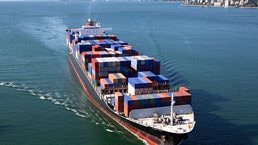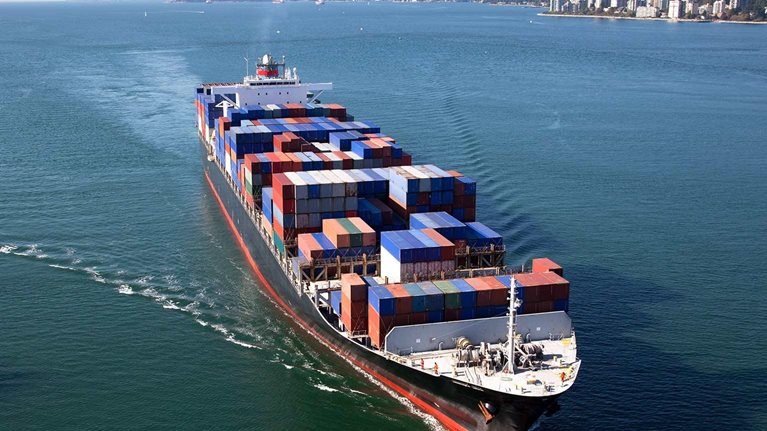In this episode of the McKinsey Podcast, Simon London speaks with McKinsey Global Institute partner Susan Lund about the changing dynamics of global value chains, which are transforming the meaning of globalization. Trade in services (as opposed to goods) has continued to rise, while intraregional trade has intensified. Underlying it all is the impact of automation on low-skill jobs—which will ultimately increase the need for innovation in operations, manufacturing, and supply chains.
Podcast transcript
Simon London: Hello, and welcome to this episode of the McKinsey Podcast, with me, Simon London. Today we’re going to be discussing globalization and trade, a topic that is very much in the news. As we’ll hear, however, there are forces at work much bigger than the trade policies of any one government. The flow of goods and services across the world is determined by the sourcing decisions of millions of companies. Those decisions are driven, in turn, by patterns of demand, assessments of risk, and the march of technology. To discuss all this, I spoke with Susan Lund, a partner with the McKinsey Global Institute, who is based in Washington, DC. If you want some bedtime reading on this one, you can download the report, Globalization in transition: The future of trade and value chains, which you can find on McKinsey.com. Susan, thanks so much for doing this. And welcome back to the podcast.
Susan Lund: Happy to be here.
Simon London: There’s a lot of political rhetoric and some policy action around trade, tariffs, talk of protectionism. So the opening question is, have we reached peak globalization? Is globalization in retreat, and what do the numbers tell us?
Susan Lund: Yes, sometime around the mid-2000s, the dynamics began to change. We didn’t see this immediately, because we had the 2008 financial crisis and the Great Recession. Trade flows plunged in 2008, 2009. A lot of us thought, “Well, when the recovery gets going in the US and Europe, then trade will ‘go back to normal.’” Now we’re ten years out from that point, and we can look back and see, in fact, we’re in a very different chapter of globalization.
The trade intensity of manufactured goods is going down. That means more goods that are produced are now sold in the country they’re produced in. They’re not traded or exported and imported. But at the same time, we see services trade continues to grow much faster than goods trade. So, increasingly, globalization is about trade in various forms of services, like IT services and telecommunications, transportation, business services, and these types of things.
Our image of globalization, for many of us, is really of companies deciding to offshore production to countries where wages are very, very low. And, indeed, that defined a lot of what we saw in the 1990s and early 2000s.
But, increasingly, we find that’s only a small share of global goods trade today. And it’s declining. Low wages are no longer the driving force in global trade flows. But then the flip side is, well, if low wages aren’t so important, what are companies looking for? And here we find that R&D and innovation and investment in intangible assets are increasingly important in virtually every industry that we look at. This means that to get those things, you want to think about production in places where there’s a skilled workforce in engineers and a start-up ecosystem.
The final big change is just that we often talk about globalization, but over the last five years what we see, increasingly, is regionalization. Trade within regions like the EU-28 or the Asia–Pacific region is growing much faster than the long-haul global trade.
Simon London: So just double click, if you don’t mind, on the trade-intensity point that you mentioned at the front end, if the percentage of output that is traded across borders is declining, in my own rather naughty layperson’s way, that says to me that globalization, in some sense, is in reverse. So declining trade intensity, is it a bad thing?
Susan Lund: No, I don’t think it’s a bad thing at all. It actually reflects the shift in where the world’s consumers are. Increasingly, China and other developing countries are home to a growing consuming class—people spending money on all sorts of goods. This explains why less goods are being traded. So what’s produced in China is now sold in China.
By 2030, we predict that emerging-market consumers are going to account for more than half of global demand. This means that a lot of foreign companies and domestic companies that are producing in these countries are going to sell to the consumers in those countries. It’s actually a sign of economic development and strength.
Want to subscribe to The McKinsey Podcast?
Simon London: Let’s talk a little bit more about the trade in services. As you say, the official stats show that cross-border trade in services is growing very fast. Now, I’ve seen in the research that this is both very difficult to measure and that the official statistics may understate global trade in services. Do you want to talk a little bit about that?
Susan Lund: Services trade has always been the poor stepsister of manufactured goods; trade negotiations often focus on things like cars or agricultural products. And services are harder to measure. But they are increasingly traded and, especially for advanced countries like the US, we’re running a very large surplus in traded services. That would be exports of business services, transportation services, tourism, and education. In the future, we might see more trade in healthcare, remote healthcare.
These are important, not only for countries but for companies. One of the things we found is that if you take a traded manufactured product, like an automobile, 30 percent of the value in creating that automobile comes from the services that go into it. That includes the R&D and design. It would include the accounting and legal services, and engineering services. It includes the distribution and logistics services, as well as the marketing and sales services.
So even though we talk a lot about trade in goods, the service component of goods is incredibly important. And it’s growing more important. If you added up the services component of manufactured goods—if you considered all the intangible assets that global companies shift around the world, as well as these free digital services, like music and video streaming or internet search and email—it could well be that the value of traded services is already greater than the value of traded goods. For some specific countries, including the United States, our overall trade balance would look very different if you appropriately accounted for all the exports of services.
Simon London: Another trend that you mentioned is the declining importance, even within goods, of lower-value-added goods and the decreasing importance of the labor-arbitrage model, where you have exports from low-wage countries to high-wage countries. Talk a little bit more about how that’s declined and why that’s declined.
Susan Lund: What we found is that if you look at the goods trade today, only 18 percent is an export from a low-wage country to a high-wage one. We’re defining “low wage” as countries where income per capita is one-fifth or less of the importing country’s. That’s already an astonishingly small component, given that our image of globalization is often about offshoring to low-wage countries. So already, in many, many, industries, there are other factors driving global trade.
Even when you look at the types of manufacturing that traditionally have used a lot of labor—like apparel, textiles, toys, and shoes—the value of trade going from a low-wage country to a high-wage country is declining even in those industries. In textiles and apparel, 55 percent of global trade was an export from a low-wage country to a high-wage country [about] ten years ago. Today that’s down to 43 percent.
The reason is automation. In all types of manufacturing, more and more production is being done by machines. When you start to automate production, then labor costs, in general, aren’t as important. And instead, you’re looking at different things. First of all, where can I get high-skill labor? Where can I get the engineers and the technicians to run the machines, to maintain the machines? You also then start to look at things like energy costs and electricity costs and the quality of infrastructure and logistics.
Many companies are also prioritizing speed to market. We see this, for instance, in fashion. As soon as, say, Kate Middleton or Kim Kardashian wears something, suddenly that item stocks out of shelves. Producers are now being caught up in the vagaries of social media driving trends and tastes. We see this not only in things like fashion but all sorts of consumer products. Consumer tastes and demands seem to be shifting more quickly, and product cycles are shortening. All of this, then, favors putting production close to large consumer markets, like the US or Europe, not halfway around the world, where goods might take 30 days on a ship to reach the market.
Simon London: You mentioned automation and a little earlier you mentioned telemedicine. Is there a sense in which the role of technology is changing? We know that technology has massively reduced transaction costs—particularly cross-border transaction-coordination costs—facilitating global trade in many ways. Is there a sense that with telemedicine, with automation, with robotics, that maybe there’s a wave of technology coming that doesn’t have quite such a simple effect and may encourage the onshoring of production that may previously have been offshored or nearshored?
Susan Lund: What we see are two opposing forces from technology. On one hand, you still have technologies that will make trade more efficient, faster, and lower cost. That would tend to boost global trade. These are technologies like blockchain to track where goods come from or to automate payout of trade credit in insurance contracts; the Internet of Things, where you can now track a shipment of goods as it moves around the world with more precision; automated document processing in customs; or autonomous vehicles in ports, which streamline the amount of time it takes to load and unload a ship.
All of these things will continue to encourage more and more goods to be traded as it gets faster and cheaper to do so. But then, on the other hand, you see these technologies that we’ve started to talk about—like automation or 3-D printing or artificial intelligence—that will start to favor producing goods in different parts of the world. That could actually reduce global trade flows.
Simon London: I’m going to make a very simplistic point here. As a layperson, we do tend to get somewhat fixated on the politics and the rhetoric and the tariffs. And as you say, those are real, and those could impose real costs or, indeed, on the other side reduce the cost of global trade. But, actually, our picture of globalization is a function of some very big multidecade exogenous forces, like the role of technology, like economic development, like the pattern of global demand. All sorts of things are driving this that are way, way bigger than what the policy makers in any one country will do. That is probably a very naive observation. But would you agree with that?
Would you like to learn more about the McKinsey Global Institute?
Susan Lund: I would absolutely agree with that. And I don’t think it’s a naive observation. I think it’s exactly what our report highlighted—that the ultimate trade numbers we talk about are really the result of the decisions of millions and millions of businesses deciding where to source inputs, where to produce goods, where to sell to consumers. Then it all adds up. Ironically, this is why you saw, at the end of 2018, that the US came in with the largest trade deficit ever in history.
You might be surprised and say why? Well, because tariffs were put on a whole lot of imported inputs that companies could not very quickly find an alternative source for. That just meant that the value of imports went up. At the same time, many countries retaliated against US agricultural products, like soybeans. Well, it is easy to switch your soybean source from, say, the US to Brazil. You can do that very quickly. But you can’t very quickly switch out a very particular automotive component that you’re importing. And so, ironically, the US ended up with a larger trade deficit than ever.
Simon London: One more trend you mentioned at the start that we haven’t really gone back to yet. But let’s talk a little bit more about regionalization—the emergence of these more intraregional trade flows. Again, what’s driving that? And what are the implications?
Susan Lund: When you look purely at the data, a lot of integration within the EU-28 and within the Asia–Pacific region is driving this increase in regionalization. But the more fundamental reason is that companies are thinking more about things like speed to market. There’s also a lot of focus on integrating with your suppliers.
In the 1990s and early 2000s, these offshore-supplier relationships halfway around the world were arm’s length. Now, there are a variety of different reasons why companies are thinking about how they can collaborate with their suppliers or how they can set up integrated digital platforms to improve the efficiency between the supplier and the user of the input. To do that, you need to have a relationship with that supplier. You need to know them. You need to agree to co-invest. Companies are even collaborating on things like product design and manufacturing processes. All of that favors having suppliers that are nearer in your region rather than 12 hours away, on the other side of the globe.
Simon London: The other fascinating thing, from everything that you’re saying, is that this is a very different pattern, on multiple levels, from the pattern of globalization we saw previously. For many people, probably including me, that’s still my mental model of what globalization is. It’s not regional trade. It’s not services. It’s ships full of relatively low-value-added goods sailing around the world. If I’m an executive, if I’m running a big company or playing a part in the management of a big company, what do I do to make sure that I’m really playing to win in the new era and not fighting yesterday’s battle?
Susan Lund: Companies around the world are increasingly rethinking their global strategy. We did a survey of over 1,000 business executives last September. We found that three-quarters of them say they are reconsidering their globalization strategy. So this is a very active issue that companies are debating, partly because of the tariffs but, more fundamentally, because of these changes in relative costs and what new technologies are enabling.
Of those executives, nearly half say that they are changing their global footprint already, that they’re increasing investments in some countries and decreasing them in others. Almost a quarter say they’re investing more in domestic, local supply chains rather than foreign sources of inputs, so that they don’t have to worry about tariffs and other trade barriers altogether. That’s a huge change from what we saw in the previous chapter of globalization.
Leading companies are already at the forefront of these changes. And, indeed, what we see is that some of them are already profiting. We talked about the need to collaborate with your suppliers. Analysis of a survey done by McKinsey’s Operations Practice found that the manufacturing companies that say they collaborate closely with their suppliers on a range of production and design issues are growing their profitability much faster than companies that say they only minimally collaborate with their suppliers. The ones that say they don’t collaborate at all with their suppliers over the last five years have seen their profitability decline.
A public example that’s been written about in the press is Columbia Sportswear, where they will design products to minimize the overall tariff impact. For instance, if you have a pair of leggings, if you put a pocket on it, it then becomes a pair of pants, which have a different tariff rate than leggings. It’s a very simple example. But the idea that you are engineering and designing a product to minimize tariffs and changing the design of the product or of the fabrics you use or how you classify it, I think, is really fascinating.
Simon London: Let’s segue to the policy maker’s view of the world. Again, if I’m thinking about economic development, particularly in a developing economy, and also in developed economies, how do I make sure that I’m thinking forward and not looking back at the previous chapter of globalization when I think about my policy actions and where to place my bets and how to try and position my country in this new world?
Susan Lund: It’s very clear that the trends I’ve talked about will favor advanced economies, because they are the ones with the skilled workforce, the good logistics infrastructure, the engineering and high-skill talent, the intellectual-property protections. These trends really favor the US, European countries, and, say, South Korea, Japan.
They stand to benefit a lot not only from the trade in services but even perhaps from picking up and accelerating manufacturing growth. That’s not going to, necessarily, replace the millions of manufacturing jobs lost in the US since 2000, because as we talked about, a lot of this production is automated. But the jobs that are created are very high wage and high skill. It’s ironic and unfortunate that in many advanced economies, policy seems to be focused on the losses from 20 years ago and on globalization and the job losses and the restructuring of global-production networks rather than looking forward to capturing the opportunities that are now arising.
For developing countries, the outlook is much less clear. We don’t think that the opportunity to engage in labor-intensive manufacturing is over yet. But that window of opportunity is closing. You do see that countries like Vietnam and Bangladesh are still growing their exports very rapidly and building up these export industries. But over time, that’s going to become less available for other countries that have not yet participated in global value chains. I’m thinking, in particular, of a lot of African countries. Then the question is, well, what could be the next development ladder to take you from agriculture? You used to go into low-skill manufacturing. Then you moved into higher-value-added manufacturing and services.
One thought is can services be that ladder? Certainly, Costa Rica, the Philippines, and India are three countries that have built up service-export industries, with call centers, IT help desks, and so on. A lot of that basic work is also automatable, done by algorithms and AI. For those countries to maintain their service exports, they’re going to have to get into more complicated things like sales and troubleshooting IT problems, not simply providing very basic information.

Globalization in transition: The future of trade and value chains
Simon London: We do make this distinction between labor-intensive services and knowledge-intensive services. It’s like not all services are created equal. It’s a very, very big and complicated bucket.
Susan Lund: That’s absolutely true. We think there will be increasing opportunities to trade and export in knowledge-intensive services. But, increasingly, labor-intensive services, like call-center work, that simply give someone an account balance—that can be done by a machine.
Technology could also create wholly new opportunities for low-income countries. We see this, for instance, in the surge in mobile payments and mobile banking. That started in Kenya with M-Pesa. Now you see it in China. Countries that had pretty underdeveloped payments networks, and never went through a period when most adults had a formal bank account, are skipping over that stage directly and just going to mobile-banking accounts based on phones. That’s an opportunity that we call technology leapfrogging.
Maybe there are going to be other opportunities as well, where developing countries will really benefit from new technologies and skip over whole phases of development, like the path taken in the US or European countries, where we all had bank accounts and checkbooks and we carried around cash. Developing countries are going directly to paying with your phone.
Simon London: Does regionalization potentially offer some interesting new opportunities to become a regional hub for processing or manufacturing services?
Susan Lund: There’s a whole range of goods that aren’t widely traded—things like heavy commodities, like steel and aluminum, and like food and beverages that are perishable. There’s a lot of opportunity for more regional trade, particularly in sub-Saharan Africa, the Middle East and North Africa, and Latin America. The regional-trade figures for those parts of the world are very, very low—say, 20 percent of trade is within regions in those parts of the world, as opposed to with the rest of the world. Two-thirds of trade within the EU-28 is just between countries in the EU-28; only one-third is with the rest of the world. There is a big opportunity to create regional trading blocs in Africa, in Latin America, in the Middle East. That does give me some hope. You’re starting to see it in East Africa with the East African Community. They have a customs union.
The outlook for individual countries is really different. We can’t use general, global observations, particularly in the developing world. There will be opportunities. But it’s going to require much more nuanced, careful policy making to look at the data and the facts and think about where the opportunities for a country are going forward.
Simon London: I think we’re out of time for the day. But Susan Lund, thank you so much, as always, for your time.
Susan Lund: Thank you. It’s my pleasure.
Simon London: And thanks, as always, to you, our listeners, for tuning in. To learn more about our work on global trade, globalization, and the McKinsey Global Institute, please visit us at McKinsey.com.


